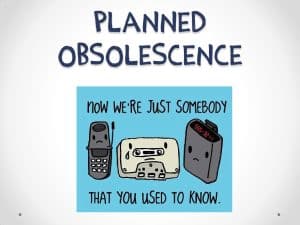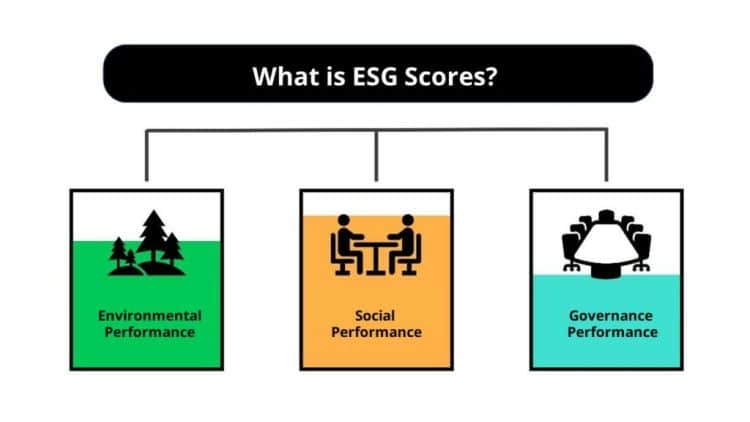Planned obsolescence is a term that might sound conspiratorial, but it is not. Markets and trading need a cycle of buying and selling to keep the supply chain and profit alive. The chain is also unstable if one of these core values is unstable. Companies, especially the large ones, reckoned the risk early and devised the solution. Products with an expiration date that will break or be outdated earlier than they could, forcing consumers to buy newer ones. This way, there will always be a need for newer-selling goods and consumers who will buy them.
Of course, nothing lasts forever. But this is different from making something less durable on purpose. For example, a washing machine could last more than ten years, but you are making degraded “modifications” to last about five years. You also give a generous five-year guarantee, but not for every part. You give five years on the motor (quoted in fine print), which is essential, but you don’t cover the board, knowing it is more prone to premature failure. This way, if the board failed earlier, the consumer would replace it or buy a new washing machine. Of course, the latter is better, but spare parts are also profitable. But you know spare parts are not forever profitable, so you reduce their production after a while to make them more challenging to find, forcing the consumer to buy a new machine.
Some companies are making repairing harder on purpose. This way, the new machine is the only way. Warranty periods are also a thing. Usually, a device is covered for about one year (in the US) or two (in the EU, this is the minimum). So, you should exceed these regulations by making devices that could last for at least the guarantee period. And, of course, not for every part, e.g., the battery. There are many examples of these practices, especially in the technology segment. Smartphones are a perfect example (battery, repairing, outdated, etc.).
On the other hand, there is the energy consumption factor (e.g., air conditions) and environmental fines (e.g., old cars). Thus forcing the consumer to buy newer products one way or another. The hard part is that buying a new device costs money and money that you might not be able to afford—especially considering the price-salary equation. I mean, who wouldn’t like to buy a new car every five years to keep up with newer standards and the car industry being more profitable? But who can afford it? Leasing might be a solution, but mainly for companies, not the average consumer.
Considering all the above, there is another solution: Paid subscription plans. This is not a new idea, but more and more companies tend to adopt it. The reason is simple. If you sell a product, it will be a one-time profit. However, you have a steady income if you have a database with an annual or monthly subscription. Sometimes, it is way more profitable than selling this product. The consumer won’t have to buy the product at a one-time high price. It sounds like a win-win situation. The problem is the exploitation. By not purchasing the product, you don’t own it. You own it only as long as you pay for it. When you stop paying for it, you no longer have access to it unless you pay again.
This is not as bad as it initially sounds, but more consequences exist. These are consequences that you might not be able to understand for now. As more businesses adopt the subscription model, purchasing a product once and owning it becomes less viable. The more companies, the more extra fees you will need to pay for the same thing (e.g., Netflix-Disney-Amazon-HBO-Hulu. If you want to watch at least one show on every platform, you have to pay for all of them). In gaming (Playstation and Xbox passes) and the entertainment section, subscriptions show discouraging results (lower quality content, poorer productions, fewer episodes, series-cutting or strip-down, etc.).
But the worst part is not even that. Car companies are already adopting subscription plans. For example, you have to pay extra to unlock the auto-pilot functionality in Tesla cars. This is just an early example. Nothing can stop companies from forcing you to pay extra for other services shortly. And as technology advances and the devices get “smarter,” that would be even easier. Imagine your car being locked at 80 km/h after five years because it is considered outdated and old. If you need to unlock it, you should pay the extra fee and a fine (even from your government) because it is out of the norm. Your air-conditioning device underperforms because it consumes more power. Buy a newer one or pay extra to unlock it.
Similar examples in technology already (apps are dropping support for older devices, frequent upgrades, etc.). Consequently, I can only imagine what this might mean for the quality of the devices. Quality standards tend to get lower considering all the above. Durability is also a factor. Older devices tend to last longer than new ones. As devices get more “complex,” one way or another, more parts fail (of course, I should add that at least they are safer nowadays). More standards to follow means more money for a company to spend so that the product will have a higher price. A price that the consumer has to pay as a result.
So, are we on our way to the “own nothing and be happy about it” thing? I can’t tell. The last paragraphs are mainly my hypotheses. I don’t know if they will be accurate. And I don’t know if something will change so that consumers will happily follow this trend. The truth is that technology advances, and nothing lasts forever. We don’t even last forever. So, the paid subscription obsolescence might be good if it won’t be exploitable. It might be a win-win situation if all cards are played well. Human standards are shifting according to newer necessities, qualities, and resources. So, it is in our hands to handle them rightly or not. We can only hope for the best.



